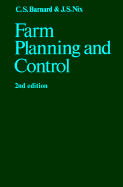Book contents
- Frontmatter
- Contents
- Notice to readers
- Preface to the first edition
- Preface to the second edition
- Selected metric conversion factors
- Part I The organisation of resources
- Part II The organisation of enterprises
- Part III The combination of enterprises
- 13 Principles and procedures in planning enterprise combination
- 14 Budgeting and programme planning
- 15 Linear programming
- 16 Uncertainty and farm organisation and planning
- 17 Further programming techniques
- 18 Matrix construction
- Part IV The control of resources and enterprises
- Selected further reading
- Index
17 - Further programming techniques
Published online by Cambridge University Press: 01 June 2011
- Frontmatter
- Contents
- Notice to readers
- Preface to the first edition
- Preface to the second edition
- Selected metric conversion factors
- Part I The organisation of resources
- Part II The organisation of enterprises
- Part III The combination of enterprises
- 13 Principles and procedures in planning enterprise combination
- 14 Budgeting and programme planning
- 15 Linear programming
- 16 Uncertainty and farm organisation and planning
- 17 Further programming techniques
- 18 Matrix construction
- Part IV The control of resources and enterprises
- Selected further reading
- Index
Summary
Conceptual criticisms of linear programming
The previous chapter ended with an evaluation of linear programming. Some of the criticisms levelled at this technique relate to its practical difficulties compared with budgeting and programme planning, but others relate to its conceptual inadequacy. That is to say, they criticise the linear programming model for inadequately representing the ‘real world’ situation. It is these criticisms that have led to the development of other computer techniques relating to the planning of a business, which are the subject of this chapter.
These shortcomings of linear programming may be summarised under three headings:
1. Structural. This refers to the assumptions of linearity and continuity. The latter means that ‘integers’, or indivisible units, cannot be dealt with in a fully acceptable manner. This difficulty relates in particular to units of building and machinery cost, and the desirability of avoiding units too small either to cover the associated specific fixed costs adequately or to be worth the managerial effort required. As a result, the maximum total net revenue plan may not be that providing the maximum profit, since the extra fixed costs may exceed the extra net revenue compared with a ‘sub-optimal’ plan. As has been seen in Chapter 15, difficulties involved with the linearity assumption can largely be overcome, by defining separate activities to describe different points on, or sectors of, a curve depicting diminishing returns.
- Type
- Chapter
- Information
- Farm Planning and Control , pp. 412 - 438Publisher: Cambridge University PressPrint publication year: 1980



